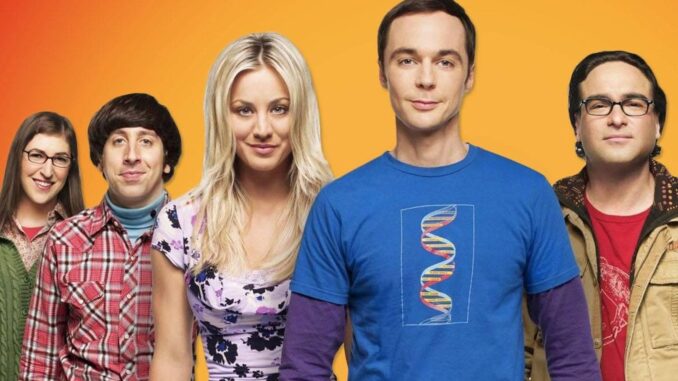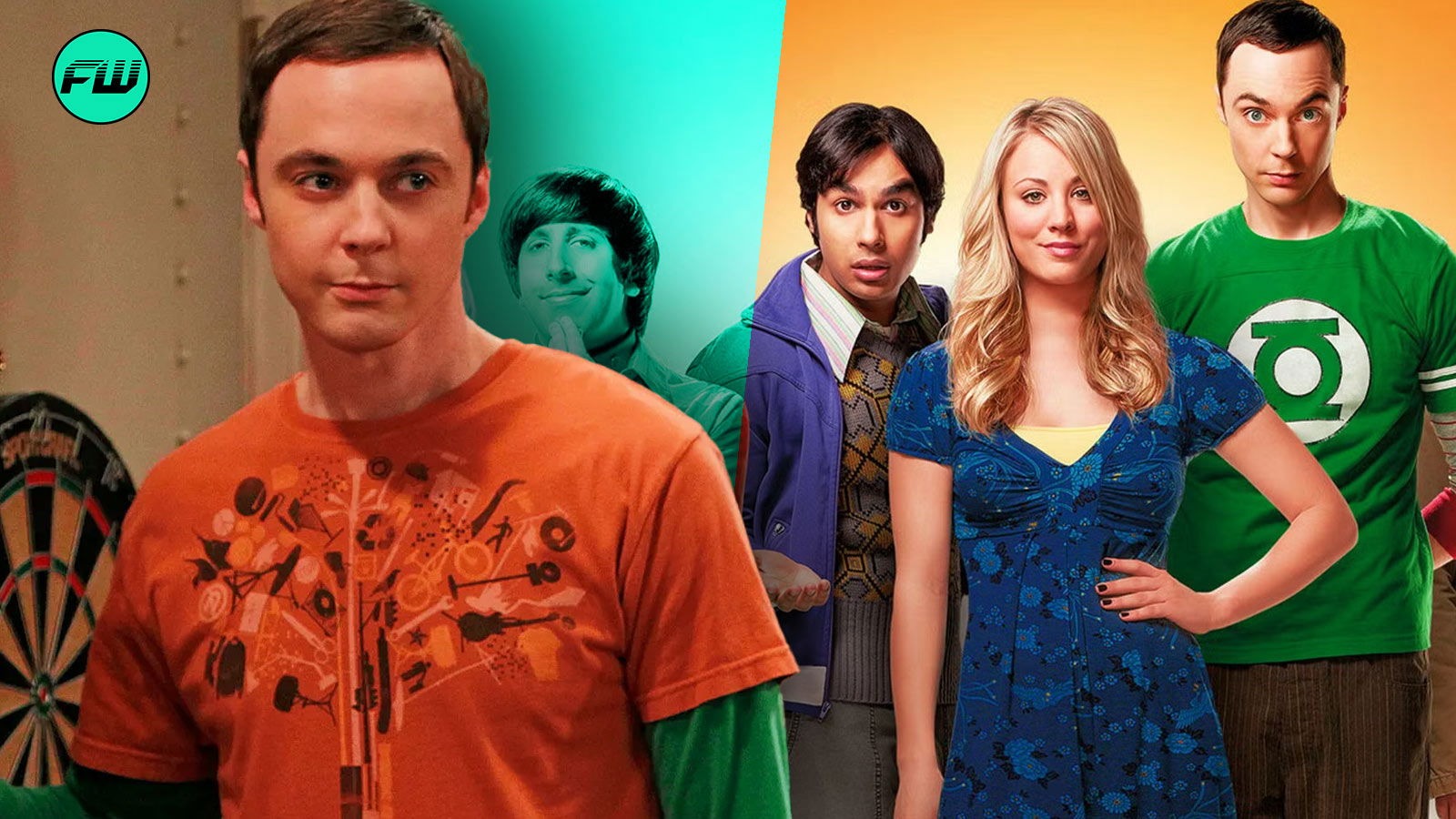
For over a decade, The Big Bang Theory dominated primetime television, delivering witty humor, unforgettable characters, and a unique blend of science and pop culture that struck a chord with millions of fans around the world. But what if I told you that before the sitcom became the phenomenon we know today, it had an entirely different name — and a very different concept?
Yes, the show that made Sheldon, Leonard, Penny, and the gang household names almost launched under a completely different title. Let’s dive into the surprising history behind The Big Bang Theory’s original concept, the rejected pilot, and how it evolved into one of the most beloved sitcoms in modern TV history.
The Sitcom That Changed Television Forever
When The Big Bang Theory premiered on CBS in 2007, few could have predicted that it would go on to become a cultural juggernaut. Created by Chuck Lorre and Bill Prady, the series followed two socially awkward physicists — Sheldon Cooper (Jim Parsons) and Leonard Hofstadter (Johnny Galecki) — whose lives change when a charming aspiring actress named Penny (Kaley Cuoco) moves in next door.
But before that perfect formula came together, the creators had another vision in mind — one that nearly derailed the entire project.
The Original Title: “Lenny, Penny, and Kenny”
Believe it or not, the original title for The Big Bang Theory was “Lenny, Penny, and Kenny.”
This early version focused on a similar dynamic — two geeky guys and one street-smart woman — but the tone and characters were drastically different. In the first pilot, Leonard (then called Lenny) and Sheldon (then Kenny) were socially awkward but less lovable and far more crass than the characters we later came to adore.
In fact, the humor leaned more toward adult themes and uncomfortable interactions than the warm, character-driven comedy that ultimately defined the show.
The Infamous Unaired Pilot
CBS actually filmed a pilot under the working title “Lenny, Penny, and Kenny” in 2006. But when network executives and test audiences watched it, the reaction was overwhelmingly negative.
The problem? The tone was off. Viewers didn’t connect with the characters, and the chemistry just wasn’t there. The only element everyone agreed on was the core idea — smart scientists interacting with a “normal” woman from a different world.
Fortunately, creators Chuck Lorre and Bill Prady weren’t ready to give up. Instead, they went back to the drawing board to reinvent the show completely.
How Chuck Lorre and Bill Prady Saved the Show

After the disastrous first pilot, Lorre and Prady realized that their biggest challenge wasn’t the concept — it was the heart of the story.
They decided to keep Jim Parsons, whose portrayal of Sheldon was already mesmerizing, but completely reworked the show around warmth, friendship, and emotional growth rather than crude humor.
The next step was recasting and reimagining the world of The Big Bang Theory — a decision that changed everything.
Kaley Cuoco Joins the Cast — and Magic Happens
When Kaley Cuoco was cast as Penny, everything clicked. Her lighthearted energy balanced out the analytical banter of Sheldon and Leonard, creating a dynamic that instantly felt authentic and funny.
Cuoco’s Penny wasn’t just “the girl next door” — she was relatable, funny, and grounded. She brought heart to the intellectual chaos, making the audience care about the characters as more than just punchline machines.
With this chemistry in place, the newly revamped The Big Bang Theory was ready for its big debut.
Why “The Big Bang Theory” Became the Perfect Title
When the show was retooled, the producers decided that “Lenny, Penny, and Kenny” simply didn’t fit anymore. It sounded more like a kids’ cartoon than a clever sitcom about science and social awkwardness.
Instead, they landed on “The Big Bang Theory” — a name that was not only catchy but brilliantly symbolic. It referenced both the scientific concept of the universe’s creation and the comic “explosion” of personalities in the show.
The new title immediately gave the series a broader identity — one that appealed to both science geeks and casual comedy fans alike.
A Second Pilot That Made History
CBS gave Lorre and Prady a rare second chance to pitch their revamped show. This new pilot introduced the main characters we know today, including Howard Wolowitz (Simon Helberg) and Raj Koothrappali (Kunal Nayyar).
This time, the chemistry was undeniable. Test audiences loved the quirky balance of intellect and innocence, and CBS knew they had something special on their hands.
The network ordered a full season — and the rest, as they say, is sitcom history.
The Evolution of Sheldon Cooper
One of the most remarkable transformations between the original and final versions was Sheldon Cooper’s character.
In the first pilot, Sheldon was written with crude humor and no understanding of social boundaries. But in the reimagined version, Jim Parsons helped craft a more nuanced portrayal — a man of brilliant intellect but endearing innocence.
His quirks, scientific obsession, and emotional growth became the emotional center of the show. It’s no wonder Parsons went on to win four Emmy Awards for his performance.
Leonard Hofstadter: The Heart of the Story
Johnny Galecki’s Leonard Hofstadter also changed significantly between pilots. Initially written as cynical and abrasive, he evolved into the warm-hearted, socially awkward scientist who became Penny’s love interest and the show’s emotional anchor.
Leonard’s ability to bridge Sheldon’s world of logic with Penny’s world of empathy made him the glue holding the group together.
How the Show Redefined “Geek Culture” on TV
Before The Big Bang Theory, most mainstream TV shows treated nerds and geeks as side characters or jokes. But this sitcom flipped the script, putting scientists, comic book lovers, and gamers front and center.
By embracing its characters’ quirks with pride rather than mockery, the show helped normalize geek culture and make it cool. Suddenly, talking about string theory and Star Trek wasn’t weird — it was funny, charming, and even relatable.
Behind the Emmy Wins and Global Success
Over its 12-season run, The Big Bang Theory earned 10 Emmy Awards and 46 nominations, cementing its place as one of the greatest sitcoms of all time.
Its success wasn’t just in the writing — it was in the cast’s perfect chemistry, the balance of heart and humor, and the way the show celebrated intelligence without taking itself too seriously.
From nerdy trivia nights to heartfelt proposals, it gave audiences laughter, warmth, and unforgettable moments week after week.
The Legacy of The Big Bang Theory
Even after its 2019 finale, The Big Bang Theory continues to thrive in syndication, streaming platforms, and fan discussions worldwide.
The show spawned a successful prequel, Young Sheldon, which explores Sheldon Cooper’s childhood — proving that fans still can’t get enough of this quirky universe.
And to think, it all started with a failed pilot and a title that nobody liked.
Why the Original Title Would’ve Been a Mistake
Looking back, it’s hard to imagine The Big Bang Theory ever being called Lenny, Penny, and Kenny. It simply doesn’t have the cleverness or depth that made the final title so iconic.
The eventual name gave the series identity, depth, and a dual meaning that perfectly captured its mix of science and humor. It’s a reminder that sometimes, failure is the first step toward success.
Conclusion: From “Lenny, Penny, and Kenny” to Legendary Sitcom
The Big Bang Theory might have started as a misfire, but it evolved into one of television’s most iconic success stories.
From a scrapped pilot to an Emmy-winning phenomenon, it’s a testament to perseverance, creative vision, and the power of reinvention.
So the next time you hear that catchy theme song, remember — it could’ve been Lenny, Penny, and Kenny. Thankfully, the universe had a much bigger “bang” in store.
